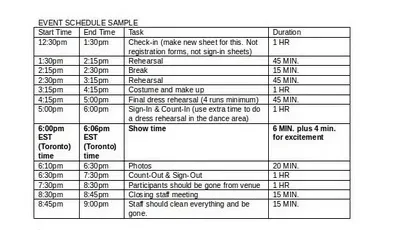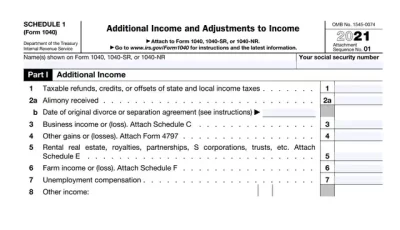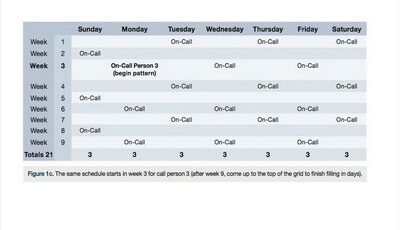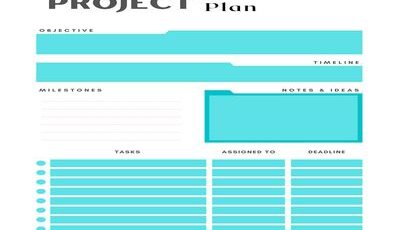Are you looking to care for your health and keep your prescriptions organized? Check out our blog for 5 schedules of drugs! Each schedule has its benefits and drawbacks, so be sure to choose the one that best suits your needs.
2 drug regimen
A 2 drug regimen, also called a “drug combination,” is a good option for people who are not allergic to either drug and want more predictability in their life. A 2-drug regimen consists of taking two drugs together instead of one. It is generally a safer option than taking just one drug because the chance that you will have an adverse reaction to both drugs is much lower.
The first benefit of using a 2 drug regimen is that it offers milder side effects from the first drug compared to taking just one pill. The second benefit is that it allows you to take the first drug regularly without fearing any negative consequences since there will be less risk of developing resistance or toxicity. Knowing your risks and benefits with each medication can help make this decision easier.
3 drug regimen
A 3-drug regimen is a good start for most people because it covers many common diseases while being affordable. This three-drug protocol includes an antibiotic, an antiviral agent, and a cholesterol medication. Each of these drugs has been shown in numerous studies to improve overall health and prevent disease.
4 drug regimen
A 4-drug regimen is a good way to start for most people. It’s more specific and tailored to the individual, but it can be more expensive. Before making the decision, consider the costs of each drug and how important each one is to your health.
The downside of this approach is that it isn’t as specific or tailored to the individual as a 4-drug regimen would be. A 4-drug regimen covers only some common diseases while leaving others out; therefore, you’ll more likely miss opportunities for treatment if you don’t have all four drugs prescribed by your doctor.
The cost of a 4-drug regimen will vary depending on which medications are included and where they’re purchased (in pharmacies or online). However, generally speaking, medications deemed essential by doctors typically carry a high price tag ($50-$700 per month), so it’s important to think about the costs before making the decision.
5 drug regimen
Drug regimens are a big topic, and there are many different ones. The best way to choose one is to tailor it to your needs. There are a lot of benefits to following a drug regimen, including the following:
- Improved mental health and well-being
- Reduced risk of several diseases
- Increased productivity and efficiency
- Greater quality of life
- Lower costs due to fewer hospitalizations or prescriptions
6 or more drugs
There are several things to consider if you’re considering a new drug schedule. The most common drug schedule is 6 or more drugs, with a lower risk of addiction and dependence. It also allows for flexibility regarding work, school, or social obligations. The 6 or more drug schedule is the most popular schedule of drugs.
But before making any decisions, it’s important to understand how each drug works and its risks and benefits. Talk to your doctor about your unique situation to choose the best drug schedule for you. Read Also: 30+ Free Employee Shift Schedule Template Excel
Important to consider the 5 schedules of drugs.
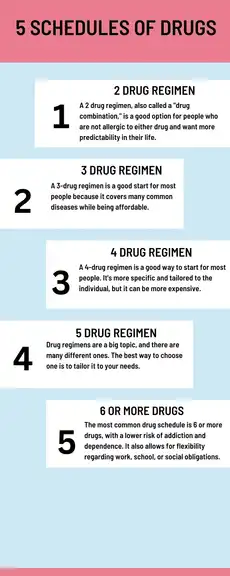
5 Schedules of Drugs
When you are considering a drug regimen to treat depression, it is important to consider the 5 schedules of drugs. This will help you determine which one is best for you.
- The standard drug regimen for treating depression includes escitalopram (Lexapro) and sertraline (Zoloft).
- A short-term drug regimen to treat an acute infection includes azithromycin and amoxicillin/clavulanate potassium.
- A long-term drug regimen used to treat chronic infections consists of clarithromycin, erythromycin, or telithromycin, with either doxycycline or rifampin added as needed.
- A flexible drug schedule can be adapted based on the patient’s needs by adding another antibiotic, such as ceftriaxone or cefotaxime, if signs of a new infection emerge, adjusting dosages of any antibiotics already taken regularly, or changing the combination altogether.
- As always, it is important to speak with your doctor about what would be best for you and consider their advice when making decisions about your treatment plan.
Conclusion
Hopefully, this blog has helped you in some way. We discussed different drug schedules and what they involved. Some people may prefer a 3 or 4-drug regimen because it is less uncomfortable for the body and allows for fewer side effects. However, if you are experiencing more serious complications from your medications, a 5 or 6-drug regimen may be the best option. Whichever schedule you choose, talk to your doctor first so they can help guide you through the process.
